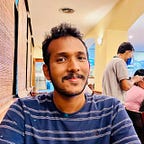Embracing CareStack: The Onam Week
In the Onam Week at CareStack, we had technical sessions the entire week. We saw the end of our back-end training and the commencement of our training in front-end web development. From mid-week, we were given sessions on the building blocks of the front end like HTML, and CSS. As usual, we received assignments after our sessions, which had to be submitted before a deadline.
Well, that’s all well and good, but I think now it’s time to address the elephant in the room — the vibrant Onam celebrations that transformed our typical workweek at CareStack into something memorable. Onam at CareStack had already started to seep into our lives the week before last when we were informed that we would be taking the lead in organizing Onam celebration events.
We initiated discussions about the various array of events that we could possibly conduct as part of the Onam celebrations, within multiple constraints, such as the time scheduled for the celebration. Conversations also revolved around the best possible distribution of the funds and time allowed, the Athapookalam design and the distribution of prizes to be given. All of us were encouraged to participate and contribute to these diverse events.
I decided to be a part of the Treasure Hunt organizing team. I was interested in organizing the treasure hunt, drawing from my past experiences in similar events during my college years. Once we assembled as a team we embarked on the journey to plan and execute the treasure hunt. We received very little to no information on how the treasure hunt was conducted the past year and had to come up with our own ideas on how to conduct the hunt. We were informed that an hour would be allocated for the hunt on two consecutive days(Tuesday and Wednesday), and it would be a team-based competition, with each team consisting of around forty members.
We had a rough sketch of the puzzles and tasks we intended to include in the hunt by the week before Onam. On Monday, two members of our team set everything up for Tuesday’s hunt, eager to kickstart the event. However, on Monday evening, when we presented our event plan, including the puzzles, to the fun@CareStack team, they expressed concerns that the puzzles appeared too easy and could be solved in a few minutes. They recalled how the previous year’s hunt had featured far more challenging puzzles, yet participants had cracked them in under 20 minutes. This feedback left me pondering the puzzles I had in mind for Wednesday’s hunt, questioning whether they would live up to expectations or if I should go for tougher puzzles.
The Tuesday’s hunt went pretty well(except for a mistake in the question), The questions were seen as not too demanding and manageable. It required around 35 minutes for the winning team to complete it. On that day, we received additional feedback from the fun@CareStack team regarding our event plan. We decided to sit back that day and set everything up for the next day’s hunt.
I had a set of puzzles in mind, which I then demonstrated to my teammates. While preparing these puzzles, I followed three guiding principles. First, the puzzles had to be accurate. I understood the frustration that comes from attempting to solve a puzzle only to discover later that the question itself was incorrect. Second, I aimed for uniqueness in the solution for a puzzle. For instance, in puzzles where participants need to connect dots to reach a solution, there should exist only one correct solution, and the given dots need to be specific. Third, the puzzles couldn't be solved using any AI-powered language model like ChatGPT.
Most of my teammates were skeptical about the puzzles’ difficulty and suggested reducing the challenge by providing more hints and clues. I found it challenging to make a decision. Lowering the puzzle difficulty by offering additional hints felt like it would diminish the fun of the event. On the other hand, I also recognized that if the puzzles were overly difficult, no one would be able to solve them, potentially leading to a lack of interest in the event. This would, in turn, strip away all the enjoyment. Eventually, I agreed with my teammates’ opinions, and we decided to ease the difficulty of the puzzles by a bit. Collaborating within a team that held differing opinions, managing conflicts, and ultimately reaching a consensus was a valuable learning experience. I also aimed to create puzzle questions that sparked curiosity and conveyed a sense of mystery, so I further modified the puzzle questions to achieve this.
After finishing most of the work for the next day’s hunt, we left the office quite late. When I arrived home, a different set of thoughts started to occupy my mind. I found myself questioning the difficulty of the questions, wondering if they could truly be solved within an hour. It dawned on me that perhaps I had perceived them as easy simply because I knew the answers. As I looked at the puzzles with my answers in mind, they seemed straightforward. I began to think about how someone who didn’t know the answers would approach solving the puzzles and what their thought process might be like. This led me to open my laptop and make some more subtle changes to the puzzles based on these new insights
The next day, everything was set, and the treasure hunt went quite smoothly. I realized that the puzzles were challenging, and we provided the necessary hints to help participants find the solutions within the given time. I was delighted to have been a part of the organizing team.
The Onam celebration day(Thursday) was eventful with traditional dresses, photoshoots, the traditional Sadhya feast, dance, Athapookalam, games, including the lemon spoon relay, and a personality contest. At the weekend, we all headed back to our homes to enjoy the Onam holidays with our parents.
